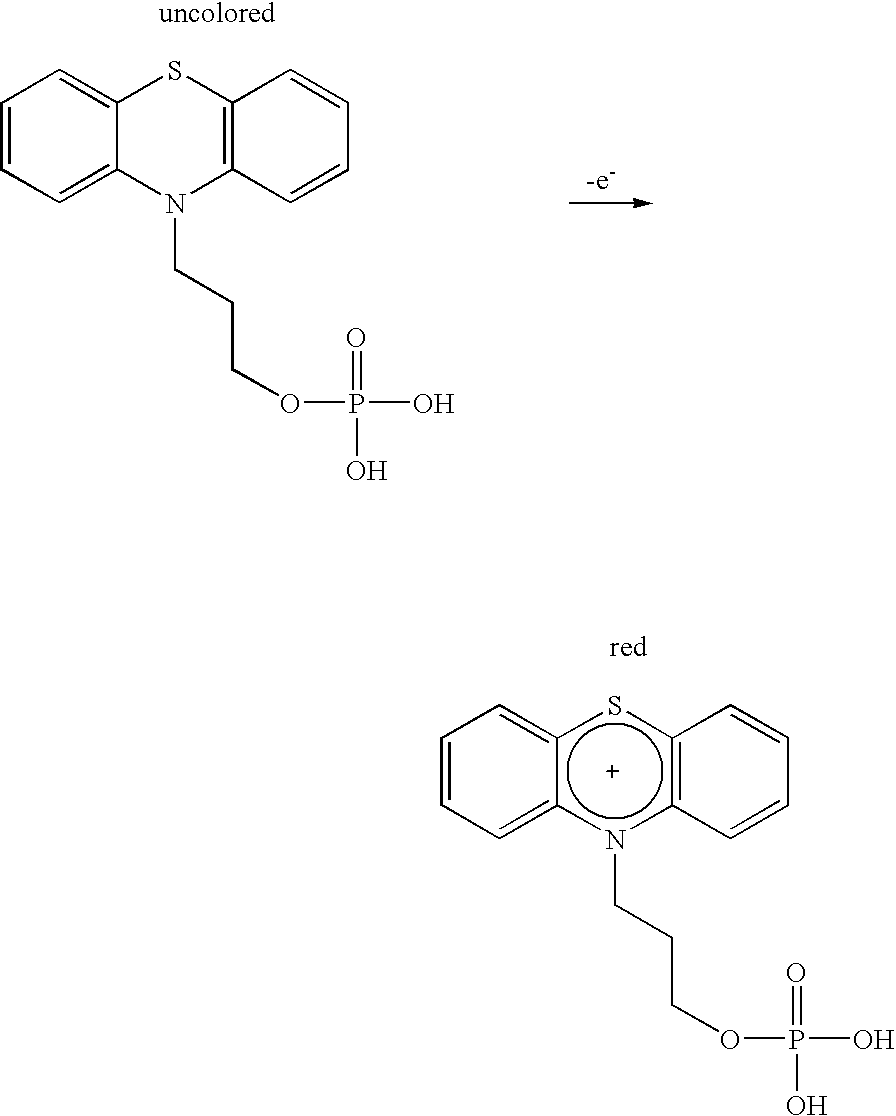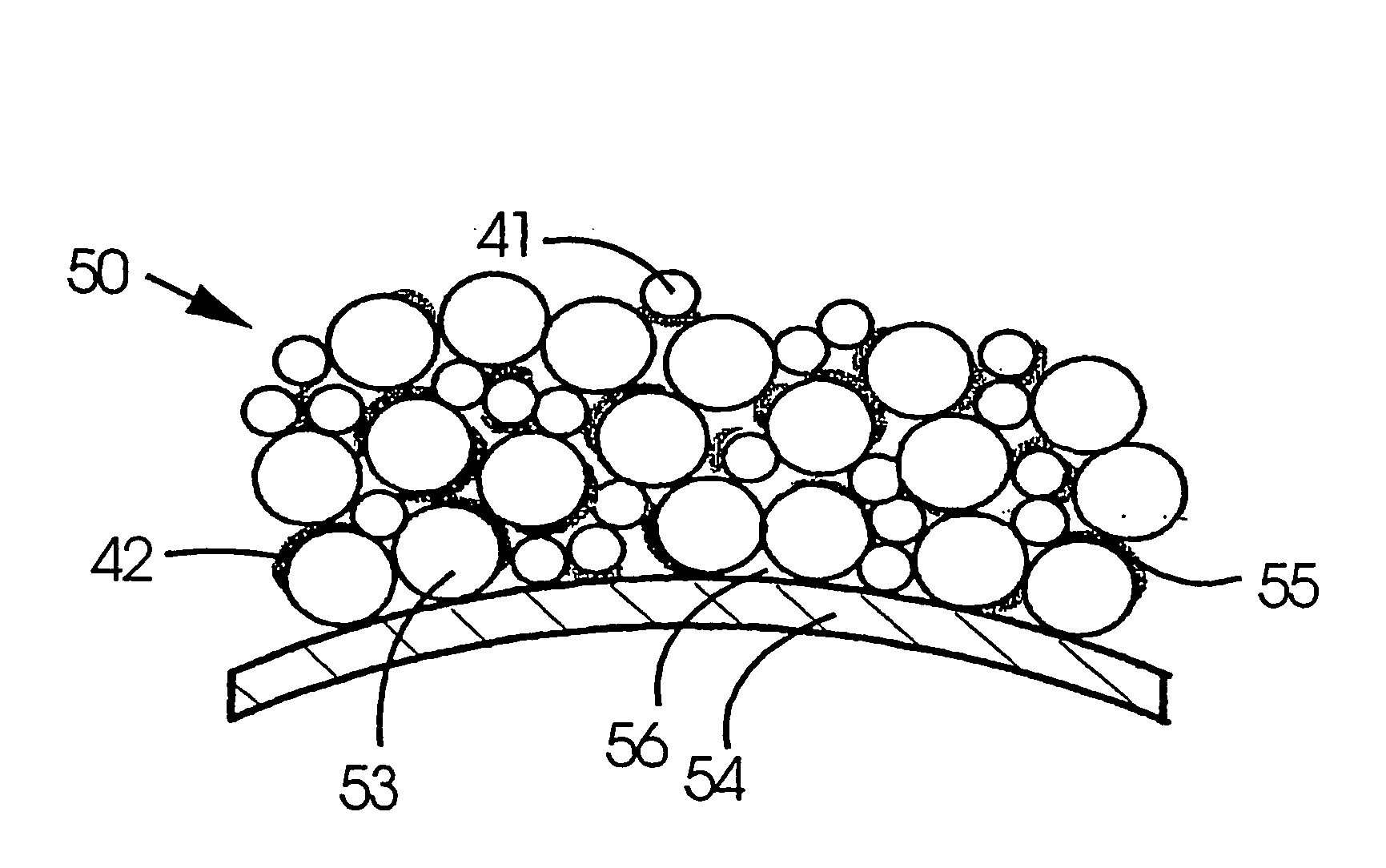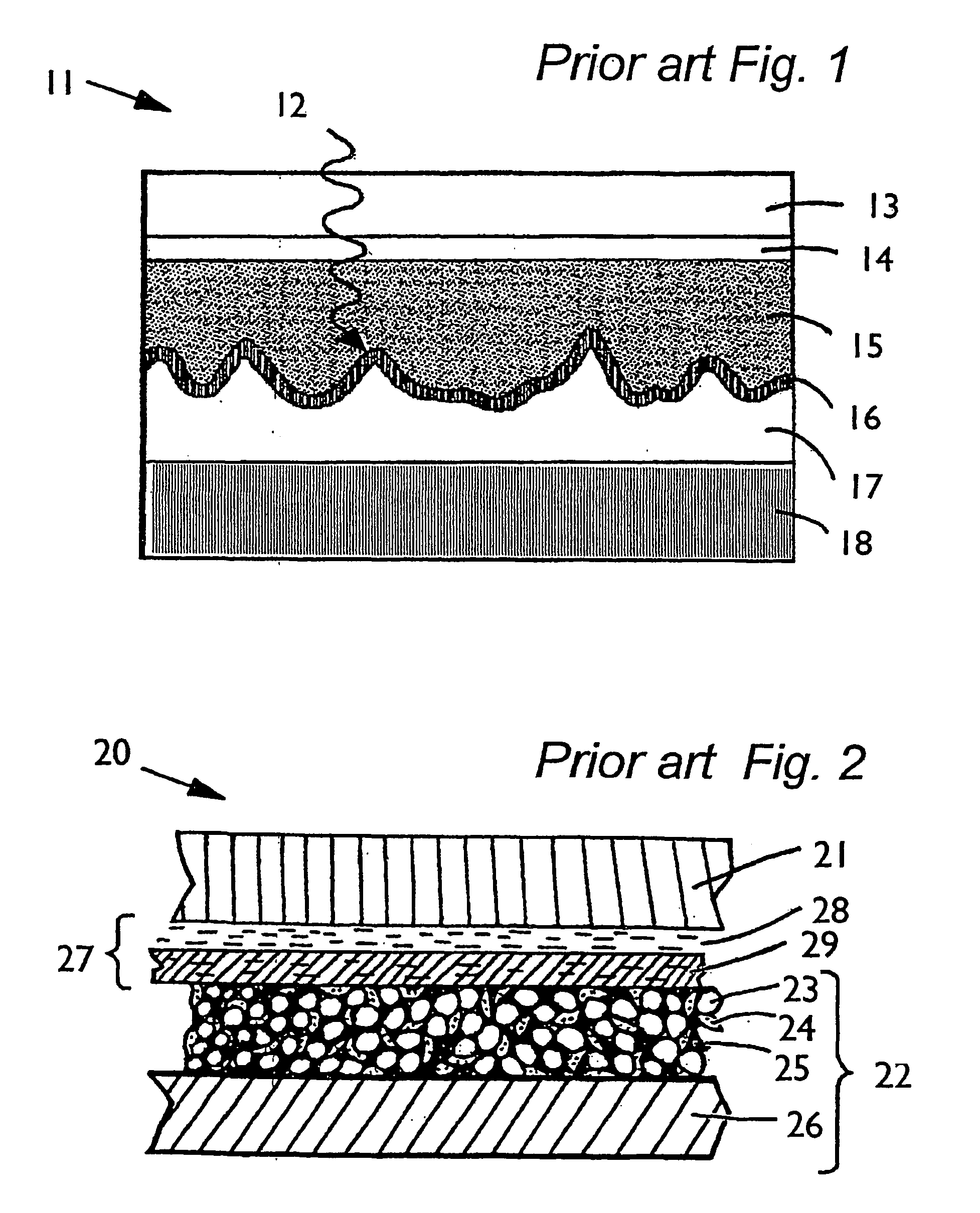Mesoporous network electrode for electrochemical cell
a network electrode and electrochemical cell technology, applied in cell components, electrochemical generators, instruments, etc., can solve the problems of poor interior connectivity of particles, limited the reported benefits arising from their amorphous structure, and hindered connection, so as to enhance the li.sup.+ insertion kinetics, facilitate cell production, and facilitate the effect of percolation
- Summary
- Abstract
- Description
- Claims
- Application Information
AI Technical Summary
Benefits of technology
Problems solved by technology
Method used
Image
Examples
example 1
Preparation of an Aqueous Titanium Dioxide Dispersion
[0097] 24.5 g of nanocrystalline TiO.sub.2 (P-25, mainly anatase) obtained from Degussa-Huls AG; Frankfurt am Main, Germany, were dispersed in 170 g deionized water at 40.degree. C. by exposing the mixture to ultrasound for several minutes. The pH of the dispersion was subsequently adjusted to 4.5 by addition of aliquots of a solution of 1 weight percent KOH in water. The treatment with ultrasound was repeated and more water added to reach a final weight of 200 g. The dispersion thus produced contained 12.5 weight percent TiO.sub.2.
example 2
Preparation of the Paste for the Coating Solution
[0098] 65.04 g of the dispersion prepared as described in example 1 were mixed at a temperature of 40.degree. C. with 7.2 g of deionized water. Subsequently a 7.5 weight percent aqueous solution of polyethyleneglycol (average molecular weight 100'000 obtained from Fluka Chemistry Inc., Buchs, Switzerland) was added and the total weight of the solution raised to 80 g by addition of water. Finally the solution was homogenized by treatment with ultrasound.
example 3
Coating of Single Layer
[0099] The coating solution was cast onto a thin copper foil laminated onto a thin transparent polyethylene-terephthalate carrier to give a loading of 100 g paste per square meter of support area. Subsequently, the coated layer was dried at 30.degree. C. for 60 minutes. The final loading of the carrier was 10 g TiO.sub.2 / m.sup.2 and 0.4 g polyethyleneglycol / m.sup.2.
PUM
 Login to View More
Login to View More Abstract
Description
Claims
Application Information
 Login to View More
Login to View More - R&D
- Intellectual Property
- Life Sciences
- Materials
- Tech Scout
- Unparalleled Data Quality
- Higher Quality Content
- 60% Fewer Hallucinations
Browse by: Latest US Patents, China's latest patents, Technical Efficacy Thesaurus, Application Domain, Technology Topic, Popular Technical Reports.
© 2025 PatSnap. All rights reserved.Legal|Privacy policy|Modern Slavery Act Transparency Statement|Sitemap|About US| Contact US: help@patsnap.com



